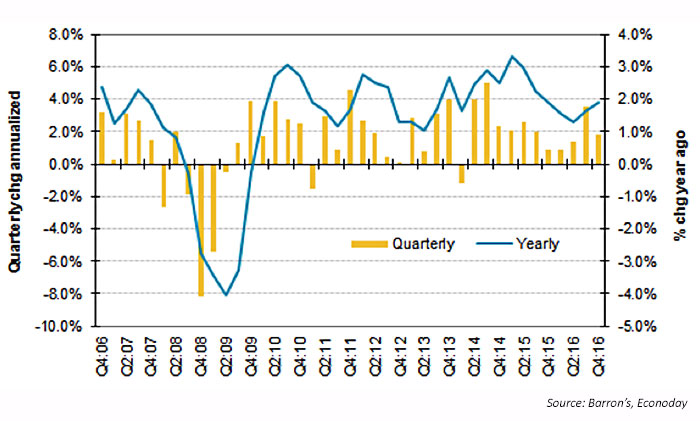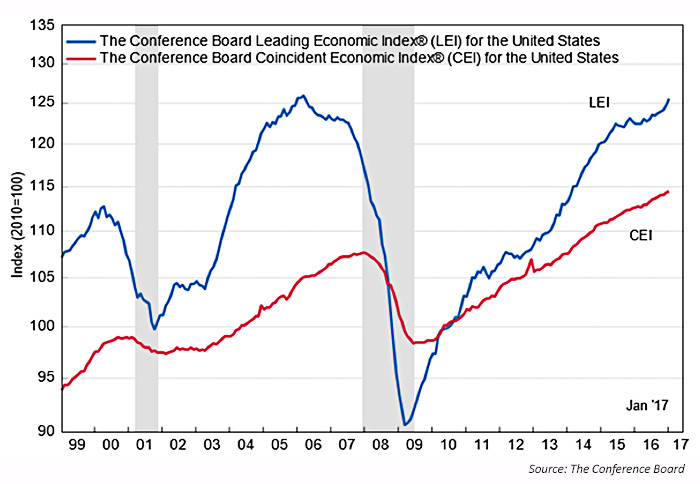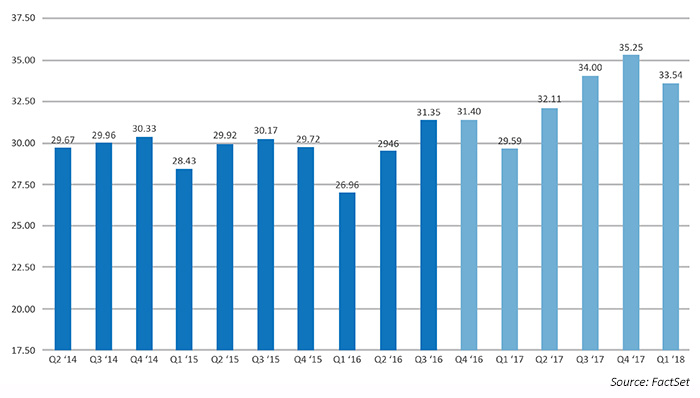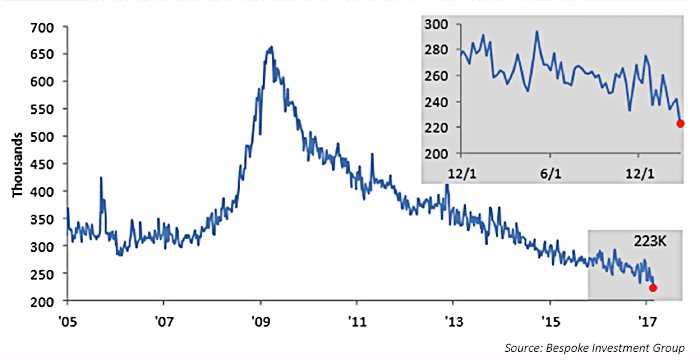
The second estimate of Q4 GDP growth in the U.S. disappointed last week, coming in at 1.9% versus consensus estimates for 2.1%. There were some bright spots in the report, most notably consumer spending upgrades and a “standout performance for durable goods” (+11.5%), according to Barron’s.
However, the trend looks to be improving overall for GDP growth after several lackluster periods in 2015 and the first half of 2016 (Figure 1), although the Atlanta Fed has downgraded their Q1 2017 estimate to 1.8%. Expectations are generally far more optimistic for late 2017 and into 2018, especially if the Trump administration delivers on its major economic goals.
According to CNBC, Deutsche Bank has issued forecasts that could see gross domestic product growth “double its current level under an agenda that cuts regulations across a broad swath of critical sectors, enacts tax reform that slashes personal and corporate taxes, and calls for at least $1 trillion in improvements for bridges, roads and other public projects.” In raw numbers, says CNBC, that could “push 2017 growth to 2.4 percent and 2018 up to 3.6 percent.”
FIGURE 1: REAL GDP GROWTH

While it is doubtful that any of the Trump administration’s actions have impacted economic (versus sentiment) numbers yet, three key forward-looking measures augur well for the outlook for GDP growth moving forward.
These include the following:
- Leading economic indicators. According to the most recent release from The Conference Board, “The Conference Board Leading Economic Index (LEI) for the U.S. increased 0.6 percent in January to 125.5 (2010 = 100), following a 0.5 percent increase in December, and a 0.2 percent increase in November.”
“The U.S. Leading Economic Index increased sharply again in January, pointing to a positive economic outlook in the first half of this year,” said Ataman Ozyildirim, director of business cycles and growth research at The Conference Board. “The January gain was broad based among the leading indicators. If this trend continues, the U.S. economy may even accelerate in the near term.”
FIGURE 2: THE CONFERENCE BOARD LEI IMPROVED IN JANUARY 2017

- Earnings estimates. According to FactSet, “For all of 2017, analysts are projecting earnings growth of 9.8% and revenue growth of 5.3%.” This represents a significant improvement over 2016’s absolute quarterly results, as can be seen in Figure 3.
FIGURE 3: S&P 500 QUARTERLY BOTTOM-UP EPS ACTUALS AND ESTIMATES

- Unemployment claims. While many critics of reported job growth over the course of the economic recovery point to the low labor-participation rate, there is little argument that the trend in unemployment claims continues to be a positive for the labor force.
Bespoke Investment Group said last week, “Jobless claims keep going lower and lower. This week’s reading came in at 223,000, which hasn’t been seen since March 1973 when the U.S. population was a shell of what it is now. The 4-week moving average for claims also hit its lowest level since April 1973. This is a great sign.”
FIGURE 4: INITIAL JOBLESS CLAIMS—SEASONALLY ADJUSTED (2005–2017)

